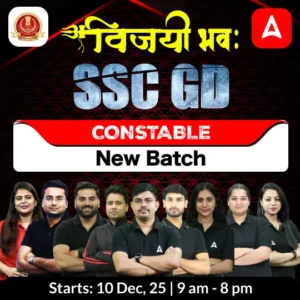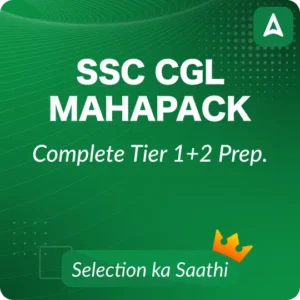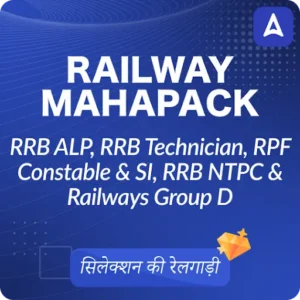Table of Contents
APPSC Group 2 Syllabus 2025
The Andhra Pradesh Public Service Commission (APPSC) has organized the APPSC Group 2 mains examination for those who qualified the Preliminary exam. The mains exam is scheduled on 23rd February 2025. Aspirants who are preparing for the Group 2 mains exam should be aware of the official syllabus and exam pattern. The latest APPSC Group 2 Syllabus 2025 has been shared in this article. Candidates can go through the article and check subject wise syllabus and exam pattern.
APPSC Group 2 Syllabus
The APPSC Group 2 Exam is held for 905 vacancies for various posts under this recruitment. The selection process is divided into two stages- Prelims and Mains. The time duration for each paper is 50 minutes. Check the details of the APPSC Group 2 Syllabus 2025 in the table below.
| APPSC Group 2 Syllabus 2025 | |
| Organization | Andhra Pradesh Public Service Commission (APPSC) |
| Exam Name | APPSC Group 2 |
| Category | Syllabus |
| Selection Process |
|
| Type of Questions | Objective Type (MCQ) |
| APPSC Group 2 Mains Hall Ticket 2025 | 13 February 2025 |
| APPSC Group 2 Mains Exam Date 2025 | 23 February 2025 |
| Number Of Questions in Prelims Exam | Total 150 Question |
| Total Papers in Mains Exam | Paper 1 and Paper 2 |
| Duration Of APPSC Group 2 Prelims | 150 Minutes |
| Duration Of APPSC Group 2 Mains | 150 Minutes for each section |
| Negative Marking | 1/3rd Mark for each wrong answer in both Prelims and Mains |
| APPSC Official Website | psc.ap.gov.in |
APPSC Group 2 Selection Process
Candidates should know the selection process for the APPSC Group 2 Executive and Non-Executive posts. It includes 3 stages as mentioned below. Candidates are required to pass all these stages with meritorious marks to get selected for the post. Check the selection stages here:
- Preliminary Exam- 150 Marks
- Mains Exam- 300 Marks
- Computer Proficiency Test
- Document Verification
| Stage | Description | Marks/Duration | Negative Marking |
|---|---|---|---|
| Preliminary Exam | 150 questions in History, Geography, Indian Society, Current Affairs, and Mental Ability. Objective type questions | 150 Marks | 0.33 marks |
| Mains Exam | Objective papers covering the History of Andhra Pradesh, the Constitution of India, the Indian and AP Economy, Science & Technology | 300 Marks | 1/3rd marks |
| Computer Proficiency Test | Assessing candidates’ computer knowledge | Qualifying Test | – |
| Document Verification | Verification of original documents | – | – |
APPSC Group 2 Syllabus 2025 (Latest)- Prelims And Mains Exam
Candidates must utilize the most recent edition of the APPSC Group 2 Syllabus 2025 when studying for the APPSC Group 2 exam. For the candidates’ convenience, we have included all of the information on the APPSC Group 2 curriculum for the prelims and Mains exams. The APPSC Group 2 Prelims and Mains curriculum can be found in the section below.
APPSC Group 2 Syllabus 2025 for Prelims Exam
The subjects make up the APPSC Group 2 Prelims exam: Indian History (30 Marks), Geography (30 Marks), Indian Society (30 Marks), Current Affairs (30 Marks), and Mental Ability (30 Marks). The first APPSC Group 2 paper is a screening paper. Review the table below for topic-by-topic information on the APPSC Group 2 Syllabus 2025 for the Group 2 exam.
APPSC Group 2 Syllabus for History
The history syllabus includes Ancient, Medieval, and Modern history. Go through the topics as given below.
| Subjects | Topics | |
| Indian History | Ancient History |
|
| Medieval History |
|
|
| Modern History |
|
|
APPSC Group 2 Syllabus for Geography
The syllabus includes Physical, Economic, and Human Geography of Indian and Andhra Pradesh.
| Subjects | Topics | |
| Geography | General and Physical Geography | The Earth in our Solar System – Interior of the Earth – Major Landforms and their features – Climate: Structure and Composition of Atmosphere-Ocean Water: Tides, Waves, Currents – India and Andhra Pradesh: Major Physiographic features, Climate, Drainage System, Soils and Vegetation – Natural Hazards and Disasters and their Management. |
| Economic Geography of India and AP | Natural resources and their distribution – Agriculture and Agro-based Activities – Distribution of Major Industries and Major Industrial Regions. Transport, Communication, Tourism and Trade. |
|
| Human Geography of India and AP | Human Development – Demographics – Urbanization and Migration – Racial, Tribal, Religious and Linguistic groups. |
|
APPSC Group 2 Syllabus for Indian Society
The syllabus of Indian Society focuses on topics like structure of Indian society, Social Issues, and welfare mechanism.
| Subjects | Topics | |
| Indian Society | Structure of Indian Society | Family, Marriage, Kinship, Caste, Tribe, Ethnicity, Religion and Women |
| Social Issues | Casteism, Communalism and Regionalisation, Crime against Women, Child Abuse and Child Labour, Youth Unrest and Agitation | |
| Welfare Mechanism | Public Policies and Welfare Programmes, Constitutional and Statutory Provisions for Schedule Castes, ScheduleTribes, Minorities, BCs, Women, Disabled and Children. |
|
APPSC Group 2 Syllabus for General Studies
Current Affairs in the exam will be asked from events of national and international importance, treaties, Sports, Organisations, National Events, etc.
| APPSC Group 2 Prelims Syllabus for General Studies | ||
| Current Affairs | Major Current Events and Issues about – International, – National and – State of Andhra Pradesh |
|
APPSC Group 2 Syllabus for Mental Ability
This section includes Logical Reasoning (Deductive, Inductive, Abductive), Mental Ability, and Basic Numeracy.
| APPSC Group 2 Prelims Syllabus for Mental Ability | ||
| Mental Ability | Logical Reasoning (Deductive, Inductive, Abductive) | Statement assumptions, Statements and Argument, Statement and Conclusion, Statement and Courses of Action. |
| Mental Ability | Number Series, Letter Series, Odd Man Out, Coding-Decoding, Problems relating to Relations, Shapes and their Sub Sections. |
|
| Basic Numeracy: | Number System, Order of Magnitude, Averages, Ratio and Proportion, Percentage, Simple and Compound Interest, Time and Work and Time and Distance. Data Analysis (Tables, bar diagram, Line graph, Pie-chart). |
|
APPSC Group 2 Previous Year Papers PDF– Click to Download
APPSC Group 2 Mains Syllabus 2025
There are three exams in the APPSC Group 2 Mains exam; the details for each paper and the entire syllabus are provided in this section.
APPSC Group 2 Syllabus for Mains Paper – 1 (150 Marks)
Section A: Social and Cultural History of Andhra Pradesh (75 Marks)
- Pre-Historical Cultures – Satavahanas, Ishwaks – Socio-Economic and Religious Conditions – Literature, Art and Architecture – Vishnu Kundinas, Vengi Eastern Chalukyas, Telugu Cholas – Society, Religion, Telugu Language, Literature, Art and Architecture.
- Various major and minor dynasties ruled in Andhra Pradesh between the 11th and 16th centuries AD. Socio-Religious and Economic Conditions, Growth of Telugu Language and Literature, Art and Architecture in Andhradesa between 11th to 16th centuries A.D.
- The advent of Europeans- Trade centres- Andhra under the Company– 1857 Revolt and its impact on Andhra- Establishment of British Rule Socio-Cultural awakening, Justice Party/Self Respect Movements- Growth of Nationalist Movement in Andhra between 1885 to 1947– Role of Socialists– Communists– Anti- Zamindari and Kisan Movements. Growth of Nationalist Poetry, Revolutionary Literature, Nataka Samasthalu, and Women Participation.
- Origin and growth of Andhra Movement- Role of Andhra Mahasabhas- Prominent Leaders- Events leading to the formation of Andhra State 1953. Role of Press and News Papers in the Andhra Movement. Role of Library Movement and Folk & Tribal Culture.
- Events leading to the formation of Andhra Pradesh State – Visalandhra Mahasabha – States Reorganization Commission and Its Recommendations – Gentlemen Agreement-Important Social and Cultural Events between 1956 and 2014.
Section B: Indian Constitution (75 Marks)
- Nature of the Indian Constitution – Constitutional Development – Salient features of Indian Constitution – Preamble – Fundamental Rights, Directive Principles of State Policy and their relationship – Fundamental Duties, Distinctive features – Unitary and Federal.
- Structure and Functions of the Government of India – Types of Legislature, Executive and Judiciary – Unicameral, Bicameral – Executive – Parliamentary, Judicial Judicial Review, Legal Activities.
- Distribution of legislative and executive powers between the centre and the states; Legislative, Administrative and Economic Relations between the Center and the States – Powers and Functions of Constitutional Institutions – UPSC, State Public Service Commissions, CAG and Finance Commission.
- Center-State Relations-Need for Reforms- Rajmannar Committee, Sarkaria Commission, MM Panchi Commission- Unitary and Federal features of Indian Constitution – Indian Political Parties – Party System in India – Recognition of National and State Parties – Elections and Electoral Reforms – Anti-Defection Law
- Centralization Vs Decentralization – Community Development Programme – Balwant Rai Mehta, Ashok Mehta Committees – 73rd and 74th Constitutional Amendment Acts and their Implementation.
APPSC Group 2 Syllabus for Mains Paper – 2 (150 Marks)
The subject-wise syllabus and marks for the APPSC Group 2 Syllabus has been shared below.
Section A: India and AP Economy (75 Marks)
Structure of Indian Economy, Economic Planning and Policy:
- National Income of India: Concept and Measurement of National Income
- Occupational Pattern and Sectoral Distribution of Income in India
- Economic Growth and Economic Development
- Strategy of Planning in India
- New Economic Reforms 1991
- Decentralization of Financial Resources
- NITI Aayog
Money, Banking, Public Finance, and Foreign Trade:
- Functions and Measures of Money Supply
- Reserve Bank of India(RBI): Functions, Monetary Policy and Control of Credit
- Indian Banking: Structure, Development and Reforms
- Inflation: Causes and Remedies
- India’s Fiscal Policy: Fiscal Imbalance, Deficit Finance and Fiscal Responsibility –
- Indian Tax Structure
- Goods and Services Tax (GST)
- Recent Indian Budget –
- India’s Balance of Payments (BOP) – FDI.
Agricultural Sector, Industrial Sector and Services in Indian Economy:
- Indian Agriculture: Cropping Pattern, Agricultural Production and Productivity
- Agricultural Finance and Marketing in India: Issues and Initiatives
- Agricultural Pricing and Policy in India: MSP, Procurement, Issue Price and Distribution
- Industrial Development in India: Patterns and Problems –
- New Industrial Policy, 1991
- Disinvestment
- Ease of doing Business
- Industrial Sickness: Causes, Consequences and Remedial Measures
- Services Sector: Growth and Contribution of Services Sector in India –
- Role of IT and ITES Industry in Development.
Structure of Andhra Pradesh Economy and Public Finance:
- Structure and Growth of AP Economy: Gross State Domestic Product (GSDP) and Sectoral Contribution, AP Per Capita Income (PCI)
- AP State Revenue: Tax and Non-Tax Revenue
- AP State Expenditure, Debts and Interest Payments
- Central Assistance
- Projects of External Assistance –
- Recent AP Budget
Agriculture and Allied Sector, Industrial Sector and Services Sector of Andhra Pradesh:
- Production Trends of Agriculture and Allied Sectors
- Cropping Pattern
- Rural Credit Cooperatives
- Agricultural Marketing
- Strategies, Schemes and Programmes related to the Agricultural Sector and Allied Sectors in Andhra Pradesh Including Horticulture, Animal Husbandry, Fisheries and Forests
- Growth and Structure of Industries
- Recent AP Industrial Development Policy
- Single Window Mechanism
- Industrial Incentives
- MSMEs
- Industrial Corridors
- Structure and Growth of Services Sector
- Information Technology, Electronics and Communications in Andhra Pradesh
- Recent AP IT Policy.
Section B: Science and Technology (75 Marks)
1. Technology Missions, Policies and Applications:
- National S&T Policy: Recent Science, Technology and Innovation Policy, and National Strategies and Missions, Emerging Technology Frontiers
- Space Technology: Launch Vehicles of India, Recent Indian Satellite Launches and its applications, Indian Space Science Missions
- Defence Technology: Defence Research and Development Organization (DRDO): Structure, Vision and Mission, Technologies Developed by the DRDO, Integrated Guided Missile Development Programme (IGMDP)
- Information and Communication Technology (ICT): National Policy on Information Technology
- Digital India Mission: Initiatives and Impact
- E-Governance Programmes and Services
- Cyber Security concerns
- National Cyber Security Policy
- Nuclear Technology: Indian Nuclear Reactors and Nuclear Power Plants
- Applications of Radioisotopes
- India’s Nuclear Programme.
2. Energy Management:
- Policy and Projections: Installed Energy Capacities and Demand in India
- National Energy Policy
- National Policy on Biofuels
- Bharat Stage Norms
- Non-Renewable and Renewable Energy: Sources and Installed Capacities in India
- New Initiatives and Recent Programmes, Schemes and Achievements in India’s Renewable Energy Sector.
3. Ecosystem and Biodiversity:
- Ecology and Ecosystem: Basic concepts of Ecology, Ecosystem: Components and Types
- Biodiversity: Meaning, Components, Biodiversity Hotspots, Loss of Biodiversity and Conservation of Biodiversity: Methods, Recent Plans, Targets, Convention and Protocols
- Wildlife Conservation: CITES and Endangered Species with reference to India
- Biosphere Reserves
- Indian Wildlife Conservation efforts, projects, acts, and initiatives in recent times.
4. Waste Management and Pollution Control:
- Solid Waste: Solid Wastes and their Classification
- Methods of Disposal and Management of Solid Wastes in India
- Environmental Pollution: Types of Environmental Pollution
- Sources and Impacts
- Pollution Control, Regulation and Alternatives: Recent projects, acts and initiatives to reduce Environmental Pollution in India
- Impact of Transgenics on Environment and their Regulation
- EcoFriendly Technologies in Agriculture
- Bioremediation: Types and Scope in India.
5. Environment and Health:
- Environment Challenges: Global Warming, Climate Change, Acid Rain, Ozone Layer Depletion Ocean Acidification
- Environmental Initiatives: Recent International Initiatives, Protocols, Conventions to tackle Climate Change with special reference to India’s Participation and Role- Sustainable Development: Meaning, Nature, Scope, Components and Goals of Sustainable Development
- Health Issues: Recent Trends in Disease Burden and Epidemic and Pandemic Challenges in India
- Preparedness and Response: Healthcare Delivery and Outcomes in India
- Recent Public Health Initiatives and Programmes.
APPSC Group 2 Syllabus for Computer Proficiency Test
The CPT/ Computer Proficiency Test is mandatory for all the candidates who cleared the mains examination. The CPT is crucial and candidates failed to qualify will be considered as disqualified. So, candidates should prepare all the topics mentioned in the CPT Syllabus.
Computer Proficiency Test Syllabus Part A:
1. INTRODUCTION TO COMPUTERS:
- Introduction to Computers
- Components and their classification
- Peripheral devices and their purpose. Input Devices
- Keyboard, Mouse, Scanner, Lighten, Touch screens, Joystick, Microphone, Scanner, Digital camera, Bar code reader, Biometric sensor Output Devices: Display devices, Printers, Monitor, Speaker, Plotter, Secondary Storage Devices
- Feature- Driven Development (FDD), Magnetic tape, Universal Serial Bus(USB), Pen Drives, Disks –
- The Role of input Processing/output processing devices
- Computing Concepts – Data – Information
- Random Access Memory (RAM)
- Read-Only Memory(ROM) – Control Unit – Memory Unit
- Arithmetic Logic Unit(ALU).
2. COMPUTER SOFTWARE TYPES:
- System Software, Application Software, Embedded Software, Proprietary Software, and Open source software (their purpose and characteristics only).
3. OPERATING SYSTEM:
Purpose of operating system, Single User and Multi User Operating Systems with Examples.
4. WINDOWS OPERATING SYSTEM:
- Interfacing Graphical User Interface (GUI), Differences between Criminal Interdiction Unit(CUI) and Graphical User Interface(GUI)
- Working With Files and Folders
- More About Files
- Running An Application Through The File Manager
- Running an Application Through The Program Manager
- Setting up of Printer, Webcam, Scanner, and other peripheral devices,
5. LINUX/MAC OS (only basic concepts):
- Introduction to Linux
- Features and advantages of Linux, File handling commands, directory handling commands
- User Management
- File permissions Media Access Control Address(MAC) OS – Introduction
- Advantages of Media Access Control Address(MAC) OS . Basics commands.
6. INTERNET CONCEPTS (only basic concepts):
Minimum Hardware and Software Requirements for a system to use the Internet, Communication Protocols and Facilities – Various browsers – What is Internet Protocol(IP) Address – Steps required in connecting the system to the network – Uploading and Downloading Files from the Internet
7. ELECTRONIC MAIL (only basic concepts):
Sending and receiving mail, Basic E-Mail Functions, Using your word processor for E-mail, Finding E-Mail Addresses, Mailing Lists and lists Servers.
8. WORLD-WIDE WEB (only basic concepts):
WWW advantages of the Web – how to navigate with the Web – Web Searching.
Computer Proficiency Test Syllabus Part B:
1. OFFICE SUITE: MS OFFICE or any open source office like Libre Office /Apache Open Office Neo Office for Windows/Linux/Media Access Control Address (MAC)OS.
2. GETTING STARTED WITH OFFICE: Introduction to Office Software- Starting and Exiting the Office
Applications – Introducing the Office Shortcut Bar – Customizing Office Shortcut Bar.
3. FILE OPERATIONS IN THE OFFICE: Common Office Tools and Techniques – Opening AnApplication – Creating Files – Entering And Editing Text – Saving Files – Opening Files – Closing a File – Exiting The Application – Managing Your files With The Office Applications.
4. TOOLS IN THE OFFICE APPLICATIONS: Key Combinations – Cut, Copy and Paste – Drag And Drop Editing – Menu Bars And Toolbars – Undo and – Redo – Spell Checking – Auto Correct – Find and Replace – Help And The Office Assistants – Templates and Wizards.
5. WORD PROCESSING (MS WORD or its equivalent in Libre office /Apache Open Office / Neo office for Windows/s/Linux/Mac OS): Starting Word 10- Title Bar – Menu Bar – Format Bar – Standard Bar – Ruler – Workspace Area – Scroll Bar – Status Bar – Different Toolbars – Option a Menu Bar – Creating New Document When Word is Running – Opening Pre existing Documents When Word is Running – Designing Your Document – Typing Text – Selection text – Deleting Text – Formatting text and document – copying and moving – Saving Document – Page Setup – Properties of a document – Undo-Redo-Cut-Copy a Document – Pasting a Document – Print Preview – Printing – Select All – Find – Replace – Go To – Four Different View Of A Document – Normal, Web Layout, Print Layout, and Outline LayoutDocument Map – Full Screen – Zoom – Objects – Page Break – Header and Footer – Page Number – Auto Format – Auto Text – Inserting Date And Time – Working With Header, Footersfootnotes-Fields-Symbols-Caption Cross Reference-Index-Tabs-Table and Sorting – Working With Graphics – Inserting Pictures – Modifying Pictures – Word Art – Inserting Chart – Inserting Files –
Hyper Linking – Bookmark – Using Different Fonts – Paragraph – Bullets Borders and ShadingColumns-Drop Cap-Theme-Change Case Background-Frames-Style-Spelling And Grammar – Set Language – Word Count – Auto Summarize – Auto Correct – Merge Document – Protect Document – Envelopes And Labels – – Templates, Wizards And Sample Documents – drawing Tables – Merge Cell – Spilt Cells – Spilt Table – Table Auto Format – Auto Fit – Sort – Formula – Arrange All-Split- Micro Soft Word Help – Macros – Custom Toolbars – Keyboard Shortcuts – Menus – Mail Merge.
6. SPREADSHEET (MS Excel or its equivalent in Libre Office / Apache Open Office / Neo office for Windows/s/Linux/ Maa OS): Features Of Excel – Excel worksheet – Selecting Cell – Navigating With The Mouse And Keyboard – Entering And Editing Text – Text Boxes – Text Notes – Checking Spelling – Undoing And Repeating Action – Entering And Editing Formulas – Referencing Cells – Order Of Evolution in Formulas – Copying Entries And Equations To Minimize Typing – More Auto Fill Examples – Creating Custom Fill Lists Protecting And Un Protecting Documents And Cell – Creating A New Worksheet – Excel Formatting Tips And Techniques – Moving cell – Copying Cells – Sorting Cell Data – Insertion Cells Inserting As You Paste – Deleting Parts Of Worksheet – Clearing Parts Of A Worksheet – Excel Page Setup – Changing Column Width And Row Heights – Auto Format – Manual Formatting – Using style – Format Code Alter A Number’s Appearance – Format Painter Speeds-Up Format Copying – Changing Font Size And Attributes – Adjusting Alignments – Cantering Text Across Column – Using Border Buttons And Commands – Changing Color And Shading – Inserting And Removing Page Breaks – Hiding Rows And Columns – Rearranging Worksheet – Entering Formula – Excel Functions – Inserting Rows And Columns – Saving A Worksheet – Printing A Worksheet – Printing Tips For Large Excel Project – Parts Of A Function – Functions Requiring Add-ins – Function Wizard – Example Of Functions By Category – Organizing Your Data – Excel’s Chart Features – Chart Parts And Terminology – Instant charts with The chart wizard – Creating Chart On Separating Worksheets – Resizing And Moving Charts – Adding Chart Notes And Arrows – Editing Charts – Rotating 3-D Charts – Printing Charts – Deleting Charts Setting The Default Chart Type – Creating Trend Lines Data Map – Working With Graphics in Excel – Creating And Pacing Graphic objects – Resizing Graphs – Possible Sources Of Excel Graphics – Creating and Running Macro – Sorting Excel Data – Adding Subtotals To Databases – Customizing Excel – Customizing Workspace – Comma Separated Value (CSV) File format – Using Worksheet As Databases.
7. PRESENTATION SOFTWARE (MS PowerPoint or its equivalent in Libre Office/Apache Open Office/Neo office for Windows/s/Linux/Mac Os):
Introduction – Starting Presentation Software – Views in Presentation Software – Slides – Terminology – Color Schemes – Formatting Slides- Creating a Presentation – Using the Auto Content Wizard – Masters- – Using a Template – Creating a Blank Presentation – Working with Text in PowerPoint – Adding Slides Editing And Working Text – Working in Outlaying view – Spell checking – Finding And Replacing Text – Formatting Text – Aligning Text – Developing Your Presentation – Importing images From The Outside World – The Clipart Gallery – Drawing in Presentation software- Bringing A Presentation to Life – Inserting Objects in Your Presentation – Inserting A Picture – Working With Graphics – Multimedia in PowerPoint – Animating The Objects, Pictures, Graphics, – Enhancements to the Slide Show Showing Slides Out Of Order Printing Presentation Elements – Finalizing The Presentation – Assigning Transitions And Timings – Setting The Master Slide – Setting Up The Slide Show – Running The Slide Show.
APPSC Group 2 Exam Pattern
The recently released examination pattern for the APPSC Group 2 Recruitment 2025 should be familiar to students before going into the comprehensive APPSC Group 2 Syllabus 2025. You can view the APPSC Group 2 Prelims and Mains exam pattern from the section provided below.
APPSC Group 2 Exam Pattern – Prelims Exam
- The APPSC Group 2 Prelims Exam is the first phase of selection for the main exam.
- 150 multiple-choice questions are in the exam.
- Each incorrect response results in a loss of one-third of the total marks.
- 150 minutes will be allotted for the test.
| APPSC Group 2 Prelims Exam Pattern 2025 | |||||
| Subjects | Topics | No. of Questions | Total Questions | Total Marks | Duration |
| General Studies | Ancient, Medieval, and Modern History | 30 |
150 |
150 |
150 minutes |
| Geography | 30 | ||||
| Indian Society | 30 | ||||
| Current Affairs | 30 | ||||
| Mental Ability | 30 | ||||
APPSC Group 2 Exam Pattern – Mains Exam
- There are three equal-weight papers on the exam.
- Every question is of the objective variety. The questions are at a bachelor’s degree level of difficulty.
- Each answer is worth one mark.
- For each incorrect response, a 1/3 mark is deducted from the final grade.
| APPSC Group 2 Exam Pattern – Mains Exam | ||||
| Paper No. | Subjects | Questions | Marks | Duration |
| Paper-I | Social history of Andhra Pradesh and cultural movements in Andhra Pradesh. A General View of the Constitution of India |
150 | 150 | 150 minutes |
| Paper-II | Indian and AP Economy Science and Technology |
150 | 150 | 150 minutes |
| Total | 300 | 300 minutes | ||
APPSC Group 2 Computer Proficiency Test
The examination consists of two sections, each assessing specific aspects of the candidates’ computer proficiency. Participants will have a duration of 60 minutes to complete the test, which is designed as a practical examination.
| Test Component | Test Duration (Minutes) | Maximum Marks | Minimum Qualifying Marks |
|---|---|---|---|
| Proficiency in Office Automation with usage of Computers and Associated Software | 60 | 100 | SC/ST/PH: 30, B.C’s: 35, O.C’s: 40 |
APPSC Group 2 Syllabus 2025 PDF Link
Interested candidates can download the APPSC Group 2 Syllabus 2025 pdf and prepare well for the APPSC Group 2 examination. The APPSC Group 2 Syllabus 2025 PDF Link is given below candidates can download the syllabus by clicking the provided link here.
APPSC Group 2 Syllabus 2025 PDF (Revised)– Click to Download
APPSC Group 2 Mains Syllabus in Telugu
Candidates can check the Group II Mains Syllabus in Telugu here. You can click on the link to APPSC Group 2 Mains Syllabus in Telugu and read about it. This will help the candidates who are going to write the exam in Telugu language.

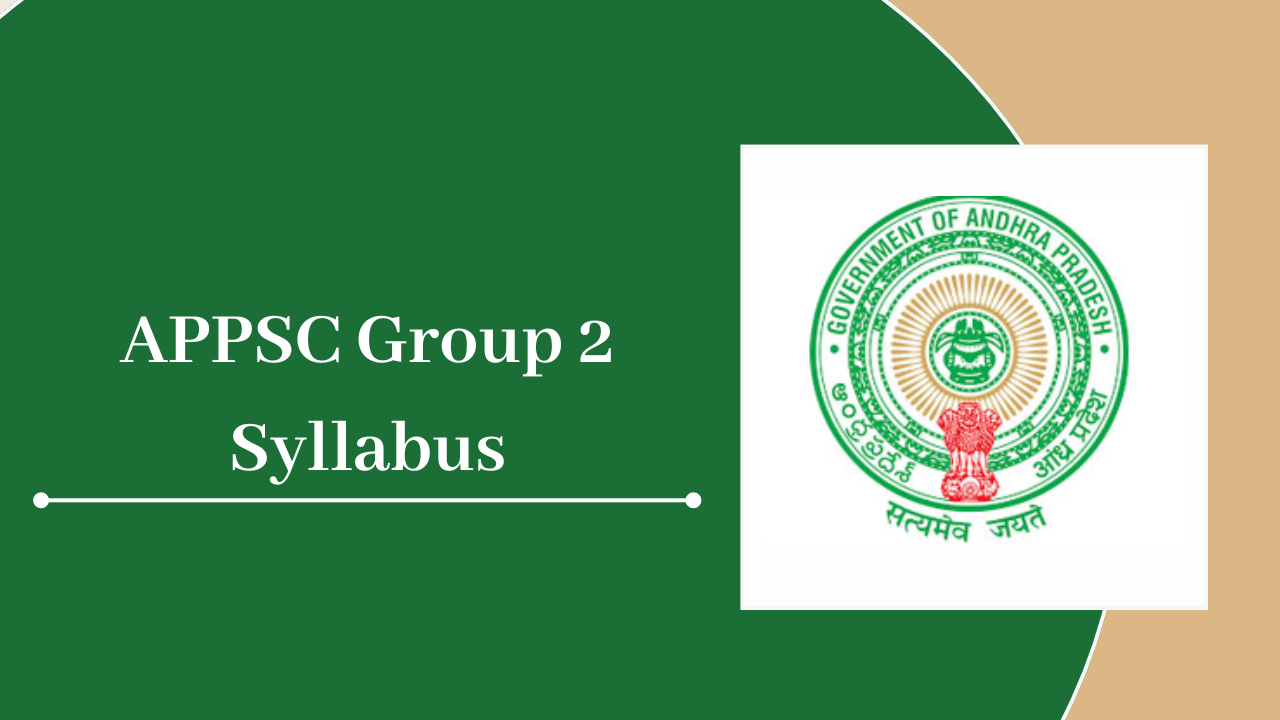

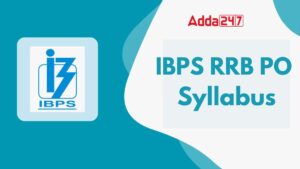 IBPS RRB PO Syllabus 2026, Exam Pattern ...
IBPS RRB PO Syllabus 2026, Exam Pattern ...
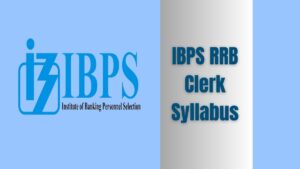 IBPS RRB Clerk Syllabus 2026, Exam Patte...
IBPS RRB Clerk Syllabus 2026, Exam Patte...
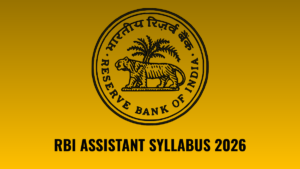 RBI Assistant Syllabus 2026 and Exam Pat...
RBI Assistant Syllabus 2026 and Exam Pat...
